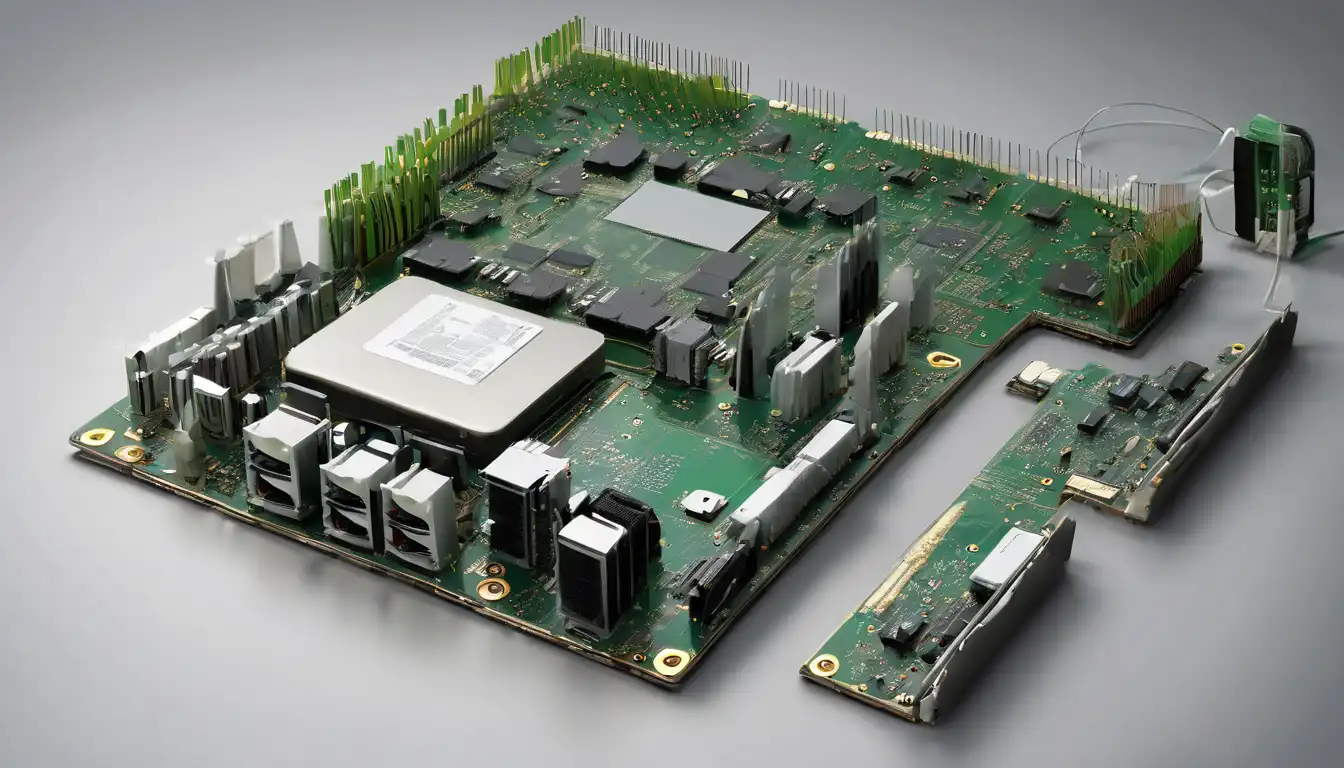The Rise of Sustainable Computing
In today's digital age, where technology permeates every aspect of our lives, the environmental impact of computing has become a critical concern. Sustainable computing represents a paradigm shift toward eco-friendly hardware solutions that minimize energy consumption, reduce electronic waste, and promote environmental stewardship. As businesses and individuals increasingly prioritize sustainability, the demand for green technology continues to grow exponentially.
The concept of sustainable computing extends beyond mere energy efficiency to encompass the entire lifecycle of hardware components. From manufacturing processes that minimize carbon footprints to end-of-life recycling programs, eco-conscious hardware solutions are revolutionizing how we approach technology. This comprehensive guide explores the latest innovations and practical strategies for implementing sustainable computing practices in various environments.
Energy-Efficient Processors and Components
Modern processors have made significant strides in energy efficiency while maintaining high performance levels. Leading manufacturers now prioritize power optimization through advanced architectures and manufacturing processes. Low-power CPUs, such as those based on ARM architecture, consume substantially less energy than traditional processors while delivering impressive computational capabilities.
Key advancements in processor technology include:
- Dynamic voltage and frequency scaling that adjusts power consumption based on workload
- Advanced power gating techniques that disable unused components
- Multi-core optimization that distributes tasks efficiently across processing units
- Thermal management systems that prevent energy waste through overheating
Beyond processors, other components like memory modules, storage devices, and graphics cards have also embraced energy-efficient designs. Solid-state drives (SSDs), for instance, consume significantly less power than traditional hard disk drives while offering faster performance and greater reliability.
Sustainable Manufacturing Practices
The environmental impact of hardware begins long before devices reach consumers. Sustainable manufacturing practices focus on reducing carbon emissions, minimizing water usage, and eliminating hazardous materials from production processes. Many manufacturers now utilize renewable energy sources in their factories and implement closed-loop water systems to conserve resources.
Important sustainable manufacturing initiatives include:
- Use of recycled materials in component production
- Implementation of lead-free soldering techniques
- Reduction of greenhouse gas emissions through energy-efficient facilities
- Adoption of circular economy principles in supply chain management
Companies are increasingly transparent about their environmental impact, publishing sustainability reports and obtaining certifications like ENERGY STAR and EPEAT. These certifications help consumers identify products that meet strict environmental standards throughout their lifecycle.
Server Infrastructure and Data Center Optimization
Data centers represent one of the largest consumers of energy in the technology sector. Sustainable computing initiatives have led to remarkable innovations in server infrastructure design and management. Modern data centers employ advanced cooling systems, power distribution optimization, and server virtualization to maximize energy efficiency.
Key strategies for sustainable data center operations include:
- Liquid cooling systems that reduce energy consumption by up to 40% compared to air cooling
- Hot aisle/cold aisle containment configurations that optimize airflow
- Power usage effectiveness (PUE) monitoring and optimization
- Renewable energy integration through solar and wind power
Server virtualization allows multiple virtual machines to run on a single physical server, dramatically reducing hardware requirements and energy consumption. This approach not only saves energy but also extends the lifespan of existing equipment, contributing to waste reduction.
End-of-Life Management and Recycling
Proper disposal and recycling of electronic equipment are crucial aspects of sustainable computing. Electronic waste contains hazardous materials that can harm the environment if not handled correctly. Responsible manufacturers now offer take-back programs and partner with certified e-waste recyclers to ensure proper disposal.
Effective end-of-life management strategies include:
- Component refurbishment and reuse programs
- Material recovery from decommissioned equipment
- Secure data destruction services
- Donation programs for functional but outdated equipment
Many organizations are adopting circular economy models where components are designed for disassembly and reuse. This approach not only reduces waste but also conserves valuable resources that would otherwise be extracted through mining and manufacturing processes.
Future Trends in Eco-Friendly Hardware
The future of sustainable computing holds exciting possibilities as researchers and engineers continue to push the boundaries of green technology. Emerging trends include the development of biodegradable electronics, energy-harvesting devices, and quantum computing systems designed with sustainability in mind.
Promising developments on the horizon include:
- Organic and biodegradable semiconductor materials
- Photonic computing that uses light instead of electricity
- Neuromorphic chips inspired by biological neural networks
- Self-powering devices that harvest energy from ambient sources
As artificial intelligence and machine learning become more prevalent, researchers are also focusing on developing energy-efficient AI hardware that can perform complex computations with minimal power consumption. These advancements will play a crucial role in making sustainable computing accessible and practical for widespread adoption.
Implementing Sustainable Computing Practices
Organizations and individuals can take concrete steps toward implementing sustainable computing practices. Simple changes like enabling power management settings, consolidating servers, and choosing Energy Star certified equipment can make a significant difference in energy consumption.
Practical implementation strategies include:
- Conducting energy audits to identify inefficiencies
- Implementing power management policies across all devices
- Choosing cloud services from providers with strong sustainability commitments
- Educating users about energy-saving practices
Regular maintenance and timely upgrades also contribute to sustainability by ensuring equipment operates at peak efficiency. When upgrades are necessary, selecting energy-efficient replacements and properly disposing of old equipment complete the sustainable computing cycle.
The transition to sustainable computing requires collaboration among manufacturers, businesses, governments, and consumers. By prioritizing eco-friendly hardware solutions and adopting responsible computing practices, we can significantly reduce the environmental impact of technology while maintaining the benefits of digital innovation. As awareness grows and technology advances, sustainable computing will continue to evolve, offering new opportunities to harmonize technological progress with environmental stewardship.
